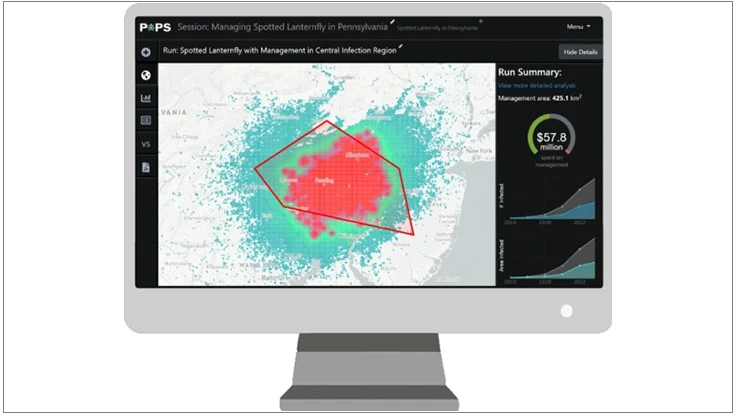
RALEIGH, N.C. – Researchers at the Center for Geospatial Analytics at North Carolina State University developed a new forecasting technology, called the Pest or Pathogen Spread forecast (PoPS), which can help the United States Department of Agriculture and other agencies predict the spread of insect pests.
Computer models are the go-to method for predicting the spread of insect pests and pathogens that cause plant disease. Running these models typically requires a large amount of data and being fluent in computer code. Assorted software is also usually needed, as well as a familiarity with the ins and outs of model calibration and validation. Under most circumstances, preparing the data and models to simulate a pest’s spread can take several months to a year. With PoPS, users can enter a few inputs to output spread predictions and comparisons of management scenarios.
The framework uses two years of the input data to calibrate its mathematical model, and the third year of data to validate it. Weather data and maps of host plants are pulled from existing repositories, and PoPS reclassifies raw values to ones the model can use.
By using a computer mouse to draw shapes on a map of predicted spread, a user can tell PoPS where they would like to apply management, such as eliminating host plants or setting targeted insect traps, and the system will calculate the financial cost as well as the impact on spread to help compare treatment scenarios. The system helps a user assess which locations are best to treat and the expected return on investment.
Latest from Pest Control Technology
- Donny Oswalt Shares What Makes Termites a 'Tricky' Pest
- Study Finds Fecal Tests Can Reveal Active Termite Infestations
- Peachtree Pest Control Partners with Local Nonprofits to Fight Food Insecurity
- Allergy Technologies, PHA Expand ATAHC Complete Program to Protect 8,500 Homes
- Housecall Pro Hosts '25 Winter Summit Featuring Mike Rowe
- Advanced Education
- Spotted Lanternflies, BMSBs Most Problematic Invasive Pests, Poll Finds
- Ecolab Acquires Guardian Pest Solutions





